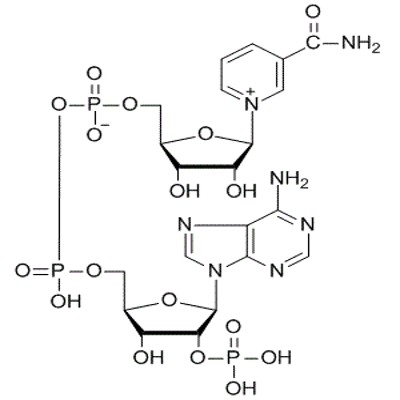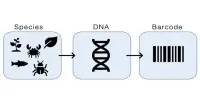NADP (nicotinamide adenine dinucleotide phosphate) (formula C21H29N7O17P3) is a coenzyme that carries electrical energy used in cellular processes. It is a required cofactor for CYP-mediated biotransformation, and oxygen serves as a substrate. When a hydrogen atom is added, NADP becomes charged and is renamed NADPH. It is a coenzyme similar to NAD and present in most living cells but serves as a reductant in different metabolic processes. This molecule is typically at a lower concentration than its counterpart NADPH, which favors the release of the hydrogen and electron from NADPH. NADP is used extensively during the Krebs (citric acid) cycle and during glycolysis and in the light-dependent reactions of photosynthesis. NADP functions alongside many enzymes to provide energy to the many reactions in a cell. This is typically done during photosynthesis in plants, or as part of sugar digestion in animals. It is created in anabolic reactions, or reactions that build large molecules from small molecules.

Nicotinamide adenine dinucleotide has several essential roles in metabolism. NADP is the used form of NADPH and must be reduced with more electrons and hydrogen. Nicotinamide adenine dinucleotide phosphate (NADPH) is a coenzyme for many of the reductive biosynthesis steps in this pathway. It plays a key role in energy metabolism by accepting and donating electrons. NADPH is used for anabolic pathways, such as cholesterol synthesis and fatty acid chain elongation.
















